Philips CD-i
Top 10 Best Philips CD-i Games of All Time!
The Philips CD-i was conceived as a interactive multimedia CD player rather than a simple gaming console. Its library was largely comprised of “edutainment” software that was seldom educational or entertaining. The system was sold through infomercials that highlighted its digital encyclopedias and multimedia capabilities, but its game library was underwhelming and largely comprised of low budget FMV releases. A prior agreement with Nintendo gave Philips the rights to release their own Mario and Zelda games on the CD-i, but this opportunity was basically squandered since Philips wasn’t even remotely interested in quality control as far as video games were concerned. You have to look long and hard to find worthwhile CD-i games, so this list was a way for me to challenge myself more than anything.
10
Hotel Mario
1994
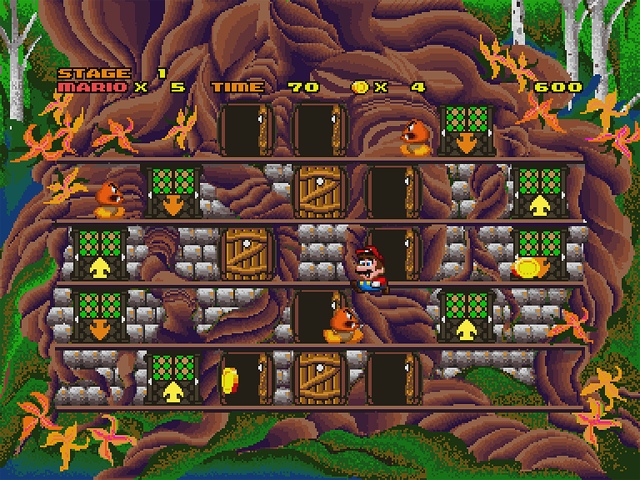
During negotiations between Philips and Nintendo regarding the unreleased CD add-on to the Super NES, Philips somehow managed to secure the rights to use Nintendo characters in CD-i third-party developed games. And what did Philips do with the most powerful licenses in the entire industry, you ask? They farmed them out to unproven developers and released shovelware, of course! The three Zelda games released on the CD-i were hilariously bad, but Hotel Mario was kind of okay aside from its horrendous animated cutscenes. The game harkens back to single-screen arcade platformers from the early ’80s and could almost be described as a worse version of Door Door. The goal in each stage is to negotiate a multi-floored hotel and close all of the doors for reasons that are never adequately explained. Players will fail if they touch an enemy, run out of time, or fall off the edge of one of the floors. The roster of enemies includes familiar faces like Goombas, Koopas, Boos, and never-ending onslaughts of Wigglers. If the action gets too intense, the brothers Mario can step into an open door for a breather while their enemies walk on by. No Mario game would be complete without cool power-ups, and Hotel Mario delivers. The game features a fire flower which allows players to shoot fireballs and a power mushroom that gives the player glowing pants and allows them to withstand an extra hit. Classic Mario and his glowing pants, right?
9
Burn:Cycle
1994
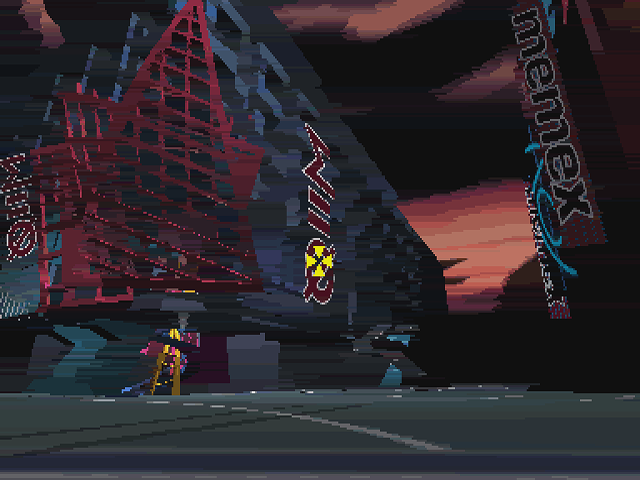
Burn:Cycle may very well be the closest thing the CD-i had to a killer app. The game played to the system’s strengths and focused heavily on full-motion video. Many games that used extensive FMV played out like a series of continuous quicktime events, but Burn:Cycle is a cross between an interactive movie and a point-and-click adventure game. The game’s story revolves around a small-time electronic data thief whose brain is implanted with a virus. With only two hours before his brain deteriorates completely, the game is a race against time as the player attempts to find a cure. The gameplay mostly consists of clicking on various items in the background, but it occasionally adds some excitement with a shooting section or a puzzle. The game culminates in a complex Pac-Man-inspired maze, and players will also get to partake in games of chance or test their skills in a mini-game based on wiring circuits. The 3D environments are completely unconvincing and the acting is pretty hammy, but Burn:Cycle is still the best example of an “interactive movie” released on the CD-i.
8
The Apprentice
1994
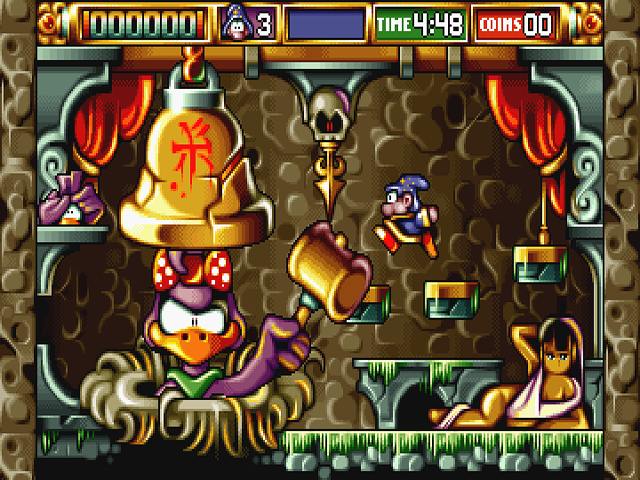
The Apprentice is one of the few platformers on the CD-i. The game stars a goofy sorcerer’s apprentice who works his way through six levels by jumping on enemies and shooting things with his magic wand. It differs from most games in the genre by virtue of the fact that there are no side-scrolling sections to speak of. (The game only scrolls vertically.) Despite it’s lofty position on this list, the game has some serious flaws. The controls are delayed, you’ll occasionally fall through platforms, and the placement of the enemies all but ensures that you’ll experience a few cheap deaths. It should also be noted that the music and sound effects are downright nauseating after a few minutes. I really liked the presentation of the game, however. The characters look great, the colors really jump out, and the animation is unrivaled on the CD-i. The visual style might give the impression that the game was intended for children, but the scantily clad girls that are strewn about the game would suggest otherwise. (There’s even a code that removes their clothing!) The Apprentice probably wouldn’t be worth a second look if it was on the SNES or Genesis, but it stands out on the CD-i.
7
Mutant Rampage: Bodyslam
1994
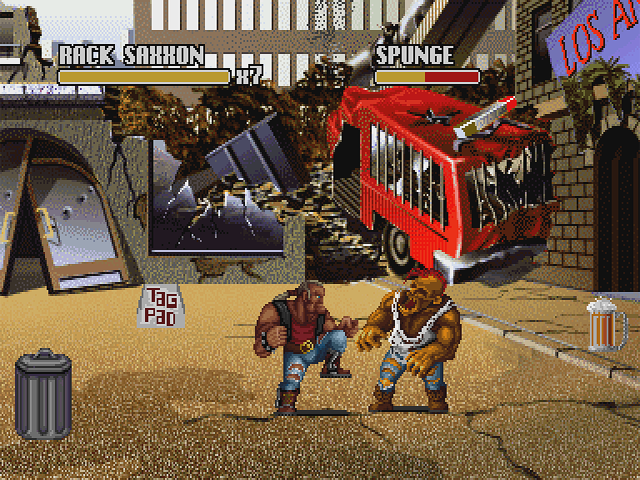
Mutant Rampage: Bodyslam is a beat ’em up with a post-apocalyptic setting. As a result of the “milennium wars,” the “grey tremor plague,” and radiation from the “Thanatos meltodwn,” the gene pool has been altered and women begin giving birth to vicious mutant creatures. As a human, it’s your responsibility to enter a tournament and beat the shit out of these mutants for some reason. Unlike many titles on the CD-i, Mutant Rampage can actually be described as a real game. It plays like a lesser version of Final Fight or Streets of Rage, but it’s not offensive in any way. The levels feature breakable objects, players are able to use various weapons, and it’s one of the few games on the CD-i that makes proper use of the controller’s three buttons. The enemy designs were appealing in a “TMNT knockoff” sense, and I had a lot of fun beating up mutants who were named things like “Tina Felina” and “Stoopid.” It’s just too bad that the game doesn’t have two-player support. The game has a number of poorly-animated cutscenes but the game itself isn’t horrible by any stretch of the imagination.
6
Zenith
1997
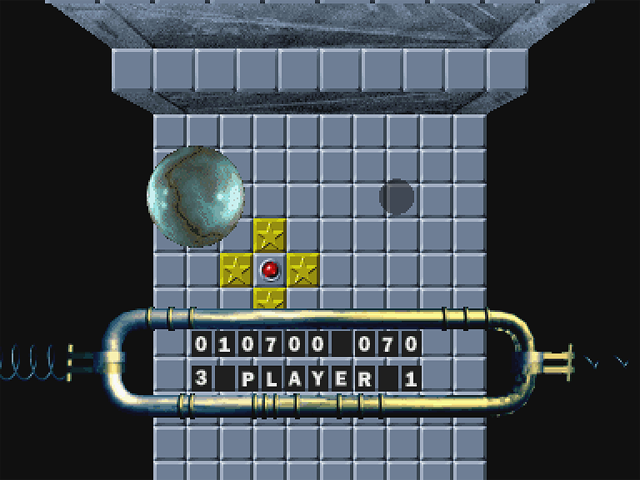
The gameplay in Zenith revolves around a perpetually bouncing ball. It could almost be described as a cross between a pinball game and a platformer. The game is played from an overhead view and the players need to guide the bouncing ball through various obstacles en route to the exit in each stage. The challenge of the game is in judging where the ball can safely land. The ball bounces on its own, but careful timing is needed if you intend to bounce it over obstacles or from one platform to another. The graphics are fairly simplistic, but the stages have a convincing 3D effect and the bouncing ball scales in a very natural manner that creates a powerful sense of depth. Players will have to activate switches, avoid traps, and find keys in order to progress through the levels, but it’s unfortunate that there’s not a little more variety. There are only six levels in total, and they all look virtually identical to one another. Zenith doesn’t live up to its potential, but it has an interesting concept and it controls surprisingly well.
5
Tetris
1992
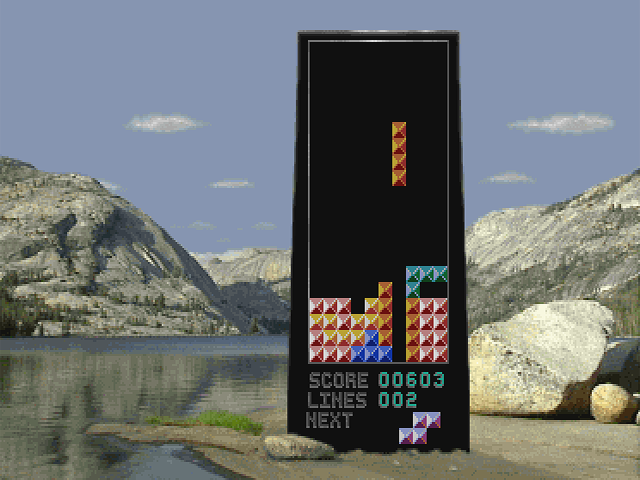
I tend to avoid ports from previous generations on these lists, so Tetris doesn’t get a lot of attention. Tetris was originally released in 1984, so unless a version of the game feels especially significant or creative, I’m not likely to mention it. I had to make an exception for the CD-i. It’s not that the CD-i version of Tetris was especially good – quite the contrary, in fact – but I was struggling to find 10 games on the platform that were worth mentioning in any capacity. The CD-i version of Tetris is one of the worst I’ve ever played. For starters, the playing field only takes up about a quarter of the screen and the rest is dominated by stock nature footage. The gameplay feels sluggish (as most CD-i games do), there’s no way to speed up the descent of the Tetris blocks, and you are only able to rotate the blocks in one direction! There are no two-player options to speak of, and the only mode for single players is broken up into stages that interrupt the action every time you clear 10 lines. Those wanting to play an endless or marathon mode will have to look elsewhere. There are no sound effects either, but the new age background music is actually quite relaxing. Unfortunately, it stops playing every time a level is cleared. Even though the CD-i version of Tetris is a lazy effort, it still outclasses most games on the system.
4
Uncover featuring Tatjana
1996
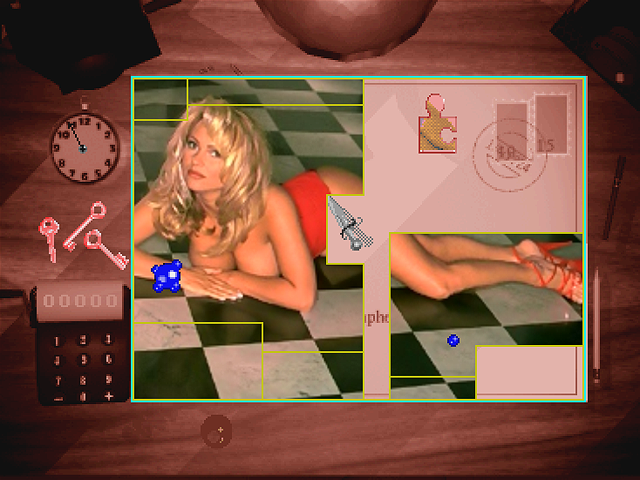
Tatjana Šimić is a Croatian actress and singer who is best-known for her nude modeling endeavors. (To put it another way, Tatjana is to music what Samantha Fox was to music.) Uncover featuring Tatjana is basically a risqué Qix clone with a convoluted storyline. The premise involves a private detective who is hired by Tatjana to retrieve stolen photographs. The process of retrieving said photos involves playing Qix-inspired mini-games in which you use a cursor and attempt to draw rectangles on the playing field without running into the other objects that are bouncing around the screen. With each successfully drawn rectangle, more of the photo will be revealed and you’ll see the lovely Tatjana in various stages of undress. Qix is a fine game and Tatjana is gorgeous, so it’s hard to complain about the game. That said, I don’t understand why someone would buy a game to see a few racy pictures when nude photos are so easy to obtain elsewhere. Even before the days when searching for images on the Internet was a viable option, nude pictures of Tatjana weren’t exactly hard to come by. She was one of the Netherlands’ biggest sex symbols and appeared on the cover of the Dutch and German editions of Playboy 17 times between 1988 and 1996. Why pay for a game that makes you jump through hoops to see lo-res photos of a semi-clothes Tatjana on a clunky television screen when you could spend a few dollars for a magazine with better pictures?
3
Flashback
1994
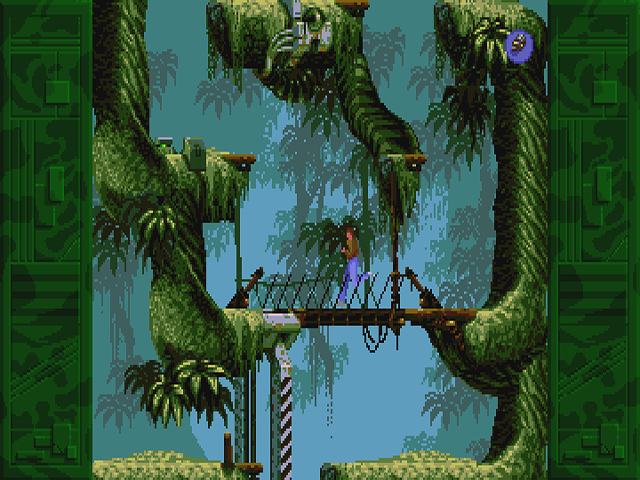
Flashback was originally released on the Amiga in 1992 before it was subsequently ported to essentially every gaming platform on the market. The spiritual successor to Out of This World, Flashback is an engrossing adventure game that’s driven by problem solving rather than straight-up action. Players have the ability to run, jump, roll, and shoot, but Flashback almost feels like a puzzle game in disguise. Nearly every screen in the game challenges the players in new ways. Flashback was particularly notable for its cinematic qualities and incredible graphics. The game featured rotoscoped animation (similar to Prince of Persia) and was a lot more fluid than typical games from the era. The hand-drawn backgrounds were also impressive, and the vibrant colors were radically different from the stark environments from Out of This World. Flashback was a riveting game with an atmospheric setting and an intriguing sci-fi storyline. It was released on basically every console, but it’s one of the best adventure games of its era regardless of what system you play it on.
2
Pac-Panic
1995
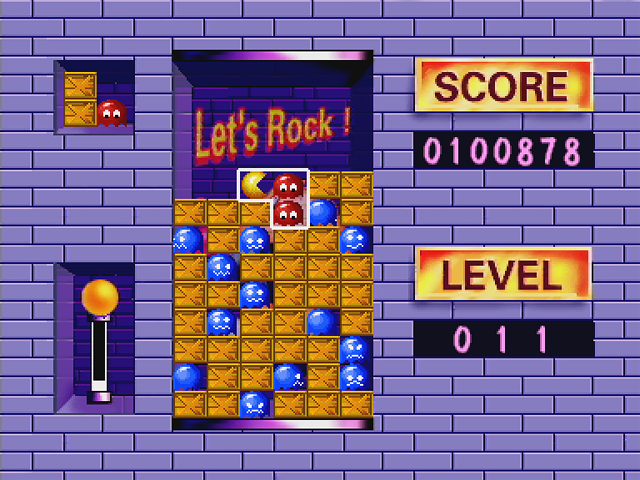
Following the unprecedented success of Tetris, many developers responded with their own “falling blocks” puzzle games. Namco’s take on the genre was an obscure arcade game called Cosmo Gang: The Puzzle that was released exclusively in Japan. The game failed to make waves, so Namco inserted Pac-Man characters into the mix and re-released it the following year as Pac-Attack. Some versions were called Pac-Panic for no rhyme or reason, but mostly for no rhyme. Like most Tetris-inspired games, the premise involves puzzle pieces that fall from the top of the screen. In this case, the pieces themselves are made up of blocks, ghosts, and Pac-Man himself. When the “Pac-Man” section is properly aligned with “ghost” sections, Pac-Man will eat the ghosts and eliminate them from the playing field. The game also allows players to build up their “fairy meter” which can eventually summon a fairy to eliminate all the ghosts on the screen. Pac-Panic is one of the best versions of the game released and features enhanced graphics. In a surprising twist, the game’s two player mode survived the porting process, making Pac-Panic the single best reason to own a second CD-i controller.
1
Lemmings
1993
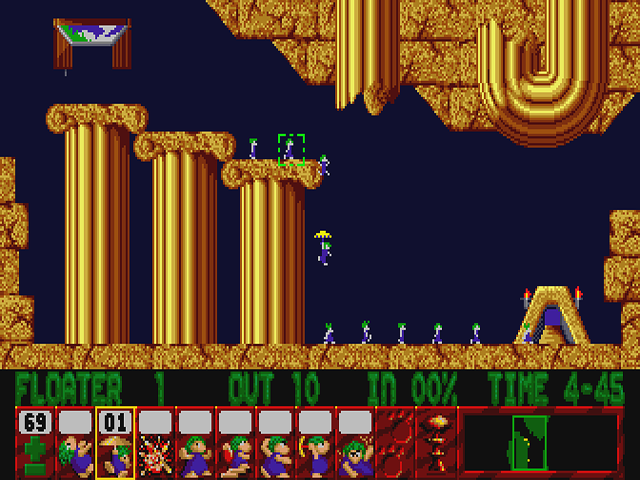
Most video games require players to destroy everything in sight, so games like Lemmings that give players the task of protecting all the things are a rare breed. Lemmings is a creative strategy game in which players assign various skills to mindless lemmings to save them from certain death. If one of the hapless creatures is headed for a pit of lava, you might instruct him to start building a staircase that will lead him to safety. Likewise, if a lemming is about to walk off a cliff, you might give him a parasol to slow his descent. Each of the game’s 120 stages are littered with dangerous obstacles, and players have a limited number of abilities to bestow on the creatures they are trying to save. Following its 1991 Amiga release, Lemmings was ported to nearly every gaming platform in existence. A number of excellent 8-bit versions were even released, so the CD-i shouldn’t have had any issue running the game. As evident by Tetris, there’s no such thing as a “sure thing” when it comes to the CD-i library. I was pleasantly surprised at how solid the CD-i port was. It lacks a two player mode and the music sounds a little compressed, but it’s one of the few console ports that lets you play the game with a mouse. A solid port of a classic game that you can play without having to use the CD-i controller? That sounds like the best game on the console to me.

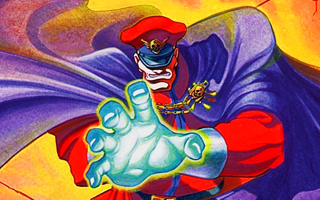
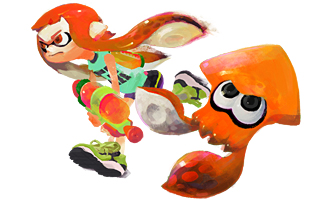
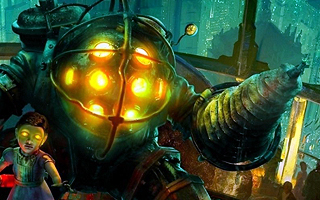

Do you agree with this list? Let us know what you think by leaving a comment below. Your opinion matters!